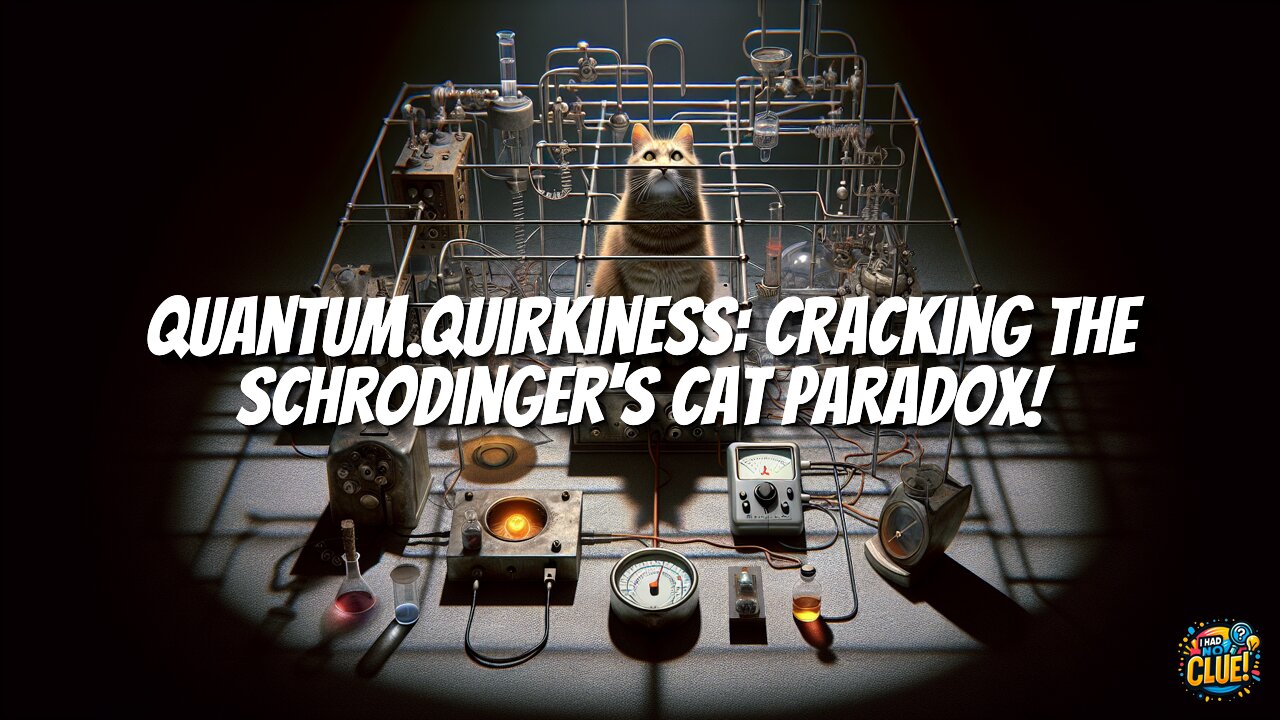Premium Only Content

Quantum Quirkiness: Cracking the Schrödinger's Cat Paradox!
https://www.ihadnoclue.com/article/1045308663877369857
Austrian physicist Erwin Schrödinger introduced Schrödinger’s Cat in 1935, a thought experiment designed to challenge conventional interpretations of quantum physics, particularly the principle of superposition. The experiment involves a hypothetical scenario with a cat, a sealed box, and a quantum mechanism. The cat's life or death depends on the random decay of a radioactive atom, which, according to quantum theory, exists in both decayed and non-decayed states simultaneously until observed. This implies the cat is dead and alive until someone opens the box, highlighting the paradoxical nature of quantum mechanics. This paradox challenges classical physics, suggesting that reality does not have a definite state until measured. It has led to various interpretations of quantum theory, including the Copenhagen interpretation and the Many-Worlds Interpretation. Some physicists argue for objective collapse theories, which propose that quantum states collapse due to natural processes rather than observation. The principles behind this thought experiment have real-world applications in quantum computing, cryptography, and biology. As a symbol of quantum mechanics and the uncertainty of reality, Schrödinger’s Cat inspires debate and remains a fundamental concept in the study of quantum mechanics.
-
 14:45
14:45
EvenOut
16 hours ago $2.45 earnedEndless Checkout At a Grocery Store!
24.4K4 -
 4:36
4:36
Misha Petrov
14 hours ago“Bikinis and Burgers” Return! Carl’s Jr. Super Bowl Ad – A Win or Just More Hypersexualization?
28.8K28 -
 9:10
9:10
MichaelBisping
23 hours agoBISPING: 'SHUT UP ABOUT CANELO!' | Jake Paul vs Canelo Alvarez?!
17.4K2 -
 37:17
37:17
inspirePlay
22 hours ago $1.15 earned🏆 The Super Bowl is Over… But Who REALLY Called It? 🏌️♂️🔥
11.8K4 -
 19:42
19:42
Degenerate Jay
22 hours ago $0.29 earnedThe Flash Video Game Cancelled... Again
10.1K1 -
 7:25
7:25
State of the Second Podcast
22 hours agoWho Won’t Make it Through the Trump Slump?
25.6K4 -
 52:36
52:36
Bek Lover Podcast
15 hours agoKanye West Meltdown & More Strange News w/ @THEREALBRADLEA & @TheBekLoverPodcast
30.3K15 -
 1:23:33
1:23:33
PMG
16 hours ago $0.91 earnedThe POWERFUL Story of Child S*x Abuse Survivor Kayleigh Kozak
18.8K3 -
 31:30
31:30
Vedic compatability astrology
17 hours ago"Coffee with Kingpins: Love, Loyalty & Lessons in the Game of Hearts" ☕❤️♟️
671 -
 1:19:23
1:19:23
Mike Rowe
2 days agoSSG Romesha Recounts One Of The Most Harrowing Battles In Afghanistan | The Way I Heard It
46K30